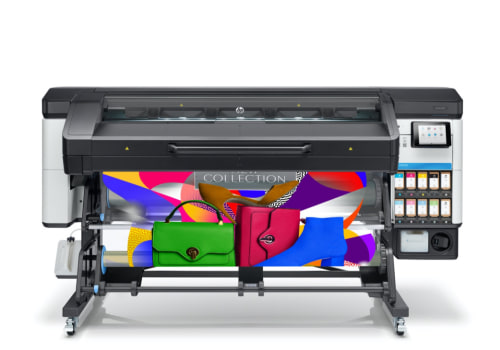Vinyl films are a versatile and durable type of film that can be used for a variety of applications, from window graphics to vehicle wraps. Whether you're looking to spruce up your windows or have a custom wrap designed for your car, vinyl films are an excellent option. But what exactly are vinyl films? And why should you choose them for your next project? In this article, we'll take a look at everything you need to know about vinyl films, from the materials they are made from to the different types available and the advantages they offer. Read on to learn more!Vinyl films are a versatile and popular choice for large format printing materials. They come in a variety of weights, sizes, and colors, and can be used for a variety of applications.
Vinyl films are made of plasticized polyvinyl chloride (PVC) and other polymers, and can be used as self-adhesive materials or applied with a heat press. One of the key benefits of vinyl films is that they are durable and can withstand environmental elements such as sunlight, water, and extreme temperatures. They are also highly flexible and can be applied to a variety of surfaces, including wood, concrete, metal, and glass. Vinyl films also have a long life span, making them ideal for outdoor signage and other long-term projects. There are several types of vinyl films available on the market today.
Each type has its own unique characteristics and benefits. For example, calendared vinyl films are thicker than cast vinyl films and provide more protection against scratches and abrasions. Cast vinyl films are thinner than calendared films and offer more flexibility for curved surfaces. Both types of films come in a range of finishes such as matte, glossy, and metallic.
When working with vinyl films, it’s important to follow best practices to ensure successful results. The surface should be clean and free of dust and debris before application. Heat presses should be set to the correct temperature for the particular type of film being used. Proper storage is also important; vinyl films should be stored in a cool, dry place out of direct sunlight to prevent fading or warping.
When it comes to installation, there are several techniques that can be used depending on the type of surface and the desired look. For example, wet installation is often used on flat surfaces such as walls or windows. This technique involves applying a solution of detergent and water to the surface before the film is applied. Heat guns and squeegees can also be used to help ensure a tight bond between the film and the surface. Vinyl films have been used in many successful projects.
For example, they are often used in vehicle wraps where they protect the paint from scratches and UV rays while also displaying a custom design or advertisement. They can also be used to create custom signage for stores or events. Vinyl films can even be used for wall murals or floor graphics. Vinyl films offer many advantages over other large format printing materials, such as durability, cost-effectiveness, and ease of installation. However, there are also some drawbacks to consider.
Vinyl films are not biodegradable, so they may not be suitable for environmentally conscious projects. Additionally, some types of vinyl films may be more prone to fading or warping over time. When choosing a vinyl film for a project, it’s important to consider factors such as the surface type, desired look, budget, and environmental impact. Different types of vinyl films offer different benefits and drawbacks, so it’s important to do research to find the right one for the job. It’s also important to follow best practices when working with vinyl films to ensure successful results.
Advantages and Disadvantages of Vinyl Films
Vinyl films are a great choice for a variety of large format printing projects due to their durability, cost effectiveness, and environmental impact.Vinyl films are also known for their longevity, often lasting for several years without fading or cracking. In addition, vinyl films are relatively inexpensive when compared to other large format printing materials. When it comes to environmental impact, vinyl films are generally considered to be more eco-friendly than other types of printing materials. Vinyl films are made from recyclable materials, and they do not contain any harsh chemicals or toxins. Furthermore, vinyl films can be recycled at the end of their life cycle, making them an excellent choice for those looking to reduce their carbon footprint. However, there are some drawbacks to using vinyl films.
For one, vinyl films are not as durable as other materials and may show signs of wear and tear after extended use. Additionally, vinyl films can be difficult to work with, as they can be prone to wrinkles and bubbles if not applied properly. Finally, vinyl films may require more maintenance than other materials, as they must be cleaned regularly in order to maintain their quality.
Types of Vinyl Films
Vinyl films are a popular choice for large format printing projects due to their versatile nature. There are a variety of types of vinyl films to choose from, each offering different benefits.The three main types of vinyl films are cast vinyl, calendered vinyl, and specialty vinyl.
Cast Vinyl
: Cast vinyl is the most expensive type of vinyl film, but it also offers the highest quality. It is made by pouring the liquid vinyl onto a casting sheet, then cured and stretched over a release liner. It is extremely durable, weatherproof, and resistant to fading or other damage. It can also be applied to any type of substrate, making it a great choice for outdoor signage.Calendered Vinyl
: Calendered vinyl is less expensive than cast vinyl and is made by extruding the liquid vinyl through a calender machine.It is more flexible than cast vinyl, so it works well for wrapping applications. However, it is not as durable as cast vinyl and is not recommended for outdoor applications.
Specialty Vinyl
: Specialty vinyl is designed for specific uses, such as vehicle wraps or window graphics. It can be printed on using solvent-based or UV-curable inks and provides a high-gloss finish. Specialty vinyl is often thicker than other types of vinyl films, which makes it more durable and resistant to fading or other damage.Choosing the Right Vinyl Film
When selecting the right vinyl film for a project, it's important to consider the weight, size, and color of the film.Vinyl films are available in a variety of weights, ranging from lightweight to heavy duty. The weight of the film will determine the strength and durability of the final product. Size is another important factor to consider, as different sizes can be used for different applications. Finally, color should be taken into consideration when choosing vinyl films.
Different colors can add visual appeal to a project, or provide an extra layer of protection. It's also important to consider the environment in which the vinyl film will be used. Some vinyl films are designed for indoor use only, while others are designed for outdoor use. Similarly, some vinyl films are designed to withstand extreme temperatures, while others are not. Knowing the environment in which the vinyl film will be used is key to making sure it will stand up to its intended purpose. Finally, it's important to consider the adhesive used when selecting vinyl films.
Different adhesives are available depending on the type of application and environment in which the vinyl film will be used. Adhesives can range from permanent to removable, so it's important to select the right adhesive for the job.
Best Practices for Working with Vinyl Films
Cleaning and Prepping SurfacesWhen working with vinyl films, it is important to ensure that the surface you are applying the film to is clean and free of dirt, dust, and debris. This will help ensure that the film adheres properly. The best way to clean the surface is with a damp cloth and mild detergent. It is also important to make sure that the surface is free of any oils or grease that may interfere with the adhesive.If you are unsure, you can use a degreasing agent to remove any oils or grease from the surface.
Proper Storage
Proper storage of vinyl films is essential to ensure that the film remains in good condition and can be used for years to come. Make sure to store the film in a cool, dry place away from direct sunlight. Additionally, make sure to store the film away from any heat sources, as high temperatures can cause the film to become brittle or discolored. It is also important to keep the film in its original packaging until you are ready to use it. This will help prevent the film from becoming damaged or wrinkled.Installation Techniques
When installing vinyl films, it is important to use the proper installation technique for the material you are using.Generally, vinyl films can be installed either by hand or with a machine. When installing by hand, make sure to use a rubber roller or squeegee to press down on the film and ensure that it adheres properly. When installing with a machine, make sure to use a heat press or laminator for best results. Additionally, make sure to follow any instructions provided by your machine's manufacturer. Vinyl films are an ideal choice for large format printing projects due to their versatility, quality, and affordability. They come in a variety of weights, sizes, and colors and can be used for a range of applications.
It is important to select the right type of vinyl film for your project and follow best practices when working with it. There are also some drawbacks to using vinyl films, such as susceptibility to moisture and fragility. In conclusion, vinyl films can be a great choice for large format printing projects when used correctly. For more information on vinyl films or assistance with selecting the right type for your project, consult a professional printer or read up on materials available online.
Take the next step and put your knowledge of vinyl films into action by using them in your next large format printing project!.











Leave Message